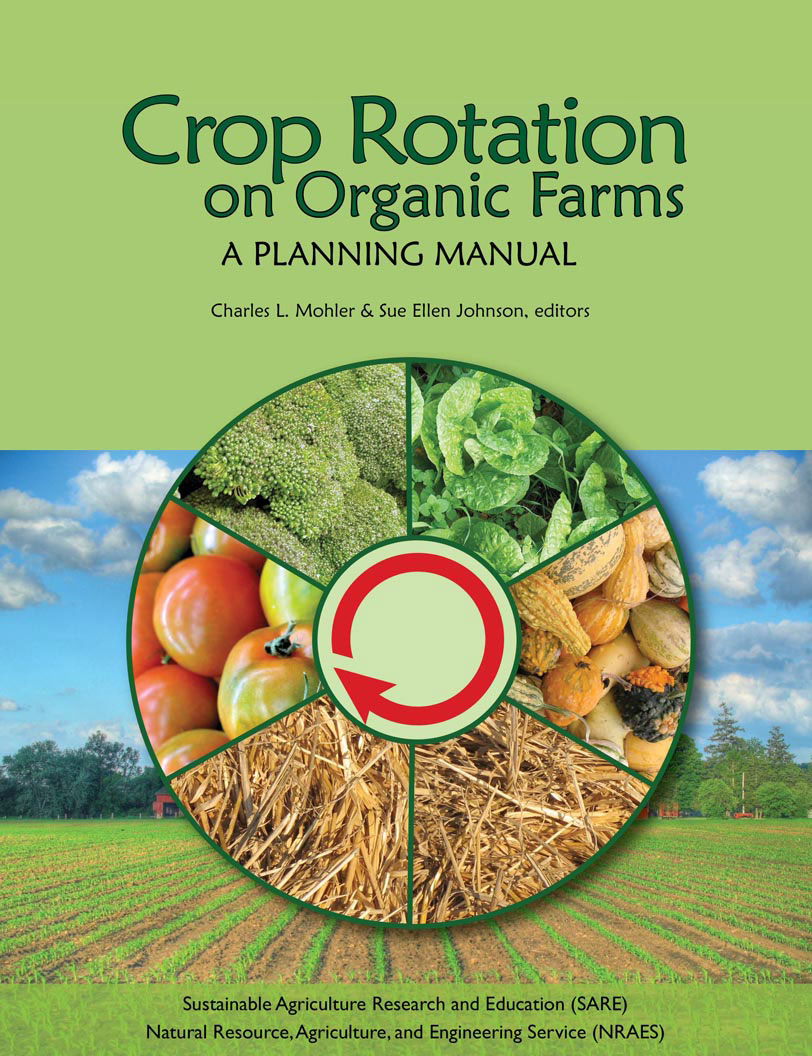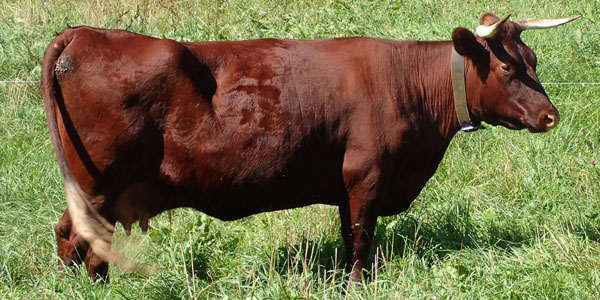
Crop Rotation on Organic Farms

Crop Rotation on Organic Farms: A Planning Manual
edited by Charles L. Mohler & Sue Ellen Johnson
book review by Sue Smith-Heavenrich of Candor, NY
The purpose of this book is to help growers understand how to manage crop rotations, build better soils, control weeds and pests, and develop profitable farms. To do that, Mohler and Johnson go directly to the folks who know best – researchers, extension educators and organic growers. Somehow they manage to cram a vast amount of information, check-lists and worksheets into this relatively thin (3/8-inches) volume.
The book begins with basics: the hows and whys of managing crop rotation and a short lecture on soil tilth and nutrition. Then Mohler and Johnson offer more than a dozen farm-tested crop sequences from the field, along with a step-by-step rotation planning guide. Even so, it’s not a fill-in-the-blank and you’re ready to plant type guide. The editors don’t tell growers which crop should follow what. Instead, they challenge growers to become intimately acquainted with their land, topography, crops and markets and guide them to develop a crop rotation program suited to their particular farm and cultural style.
Crop rotation Mohler-style begins with questions: What are your goals? Do you want to maintain healthy soil? Control a particular disease? Add nutrients?
Then you list the crops you plan to grow and the amount of land given over to each. One thing Mohler and Johnson emphasize is crop diversity; if you have a lot of acreage invested in a particular plant family it will be harder to develop a rotation.
Divide your farm into small management units, they suggest. It doesn’t matter whether a management unit is a 5’x100’ bed or a half-acre field – what does matter is that you map them. A hint: making units the same size simplifies planning and record-keeping. Another hint: make multiple copies of your maps because you’ll be collecting lots of data as you walk your land and work out potential rotations.
One of the things Mohler cautions growers to do is develop contingency plans for alternate rotations should there be weather disasters, flooding, or a drought in the marketplace.
Mohler includes a chapter on crop rotations during the transition from conventional to organic agriculture, with advice for turning an old hayfield into vegetable production. Perennial weeds, he notes, pose a substantial problem so consider putting the newly plowed land into a season of cover crops and fallow. If you can’t, then at least have the first crops be something you transplant. And, whatever you do, avoid planting viney crops like pumpkins and squash the first year; they are hard to weed.
For those who place a high value on diversity, there’s a separate chapter offering guidelines for intercropping. Use tall crops to reduce the effects of drought and heat stress on shorter crops, suggests Kim Stoner. Interrupt crop plantings with rows of something else that will make it harder for insect pests to find the crop and plant flowers that will provide habitat for beneficial insects. If you can, plant trap crops to reduce insect pest pressure on your market crops. However, understand that intercropping makes it more difficult to develop rotations, as you now have to take into account the needs of two crop families.
The last third of the book is given over to appendices, with a table detailing crop sequence problems and a particularly useful list of disease pathogens hosted by agricultural weeds. There’s even a detailed explanation on how to create management maps of your fields using Excel spreadsheets, along with a link to examples.




